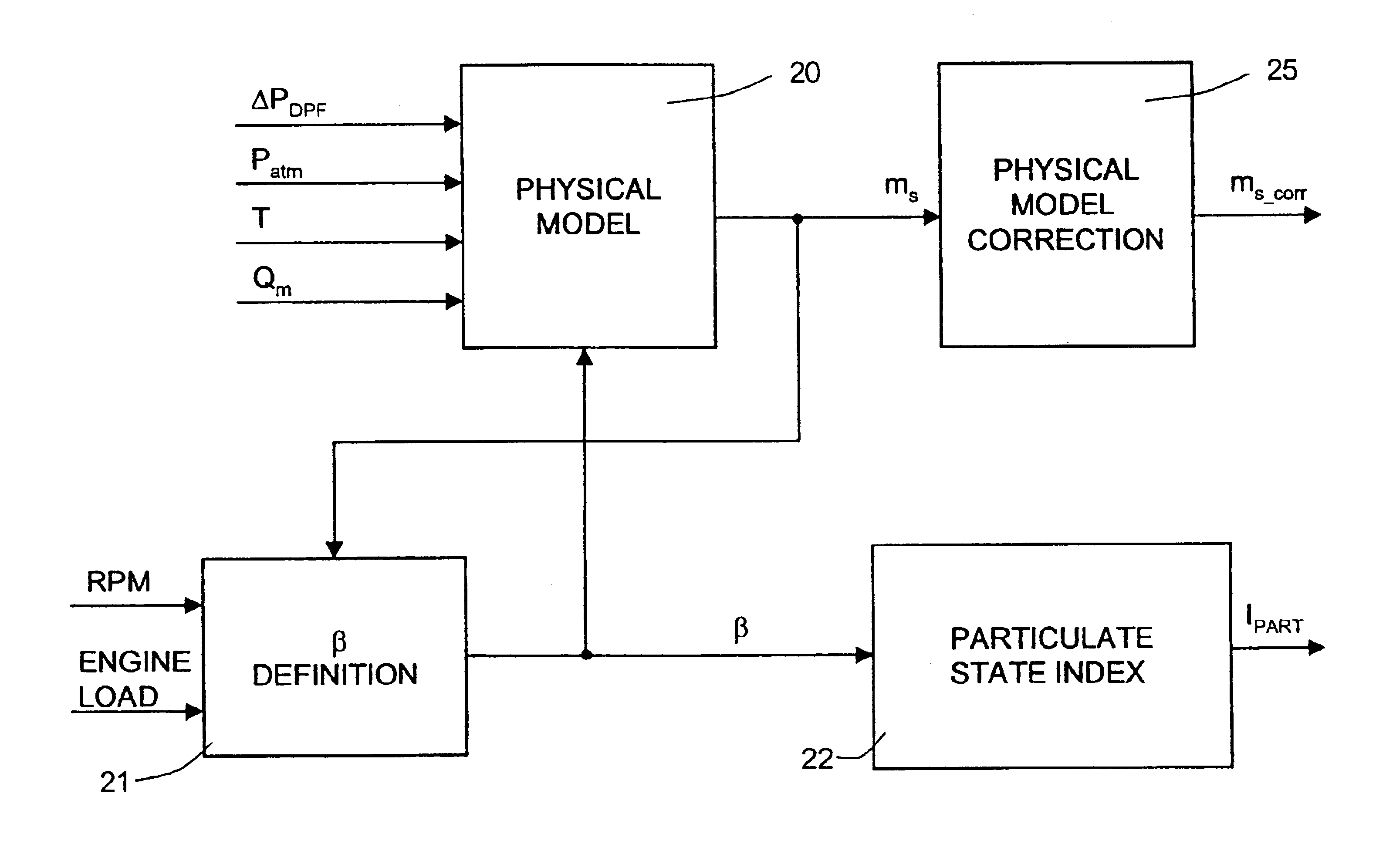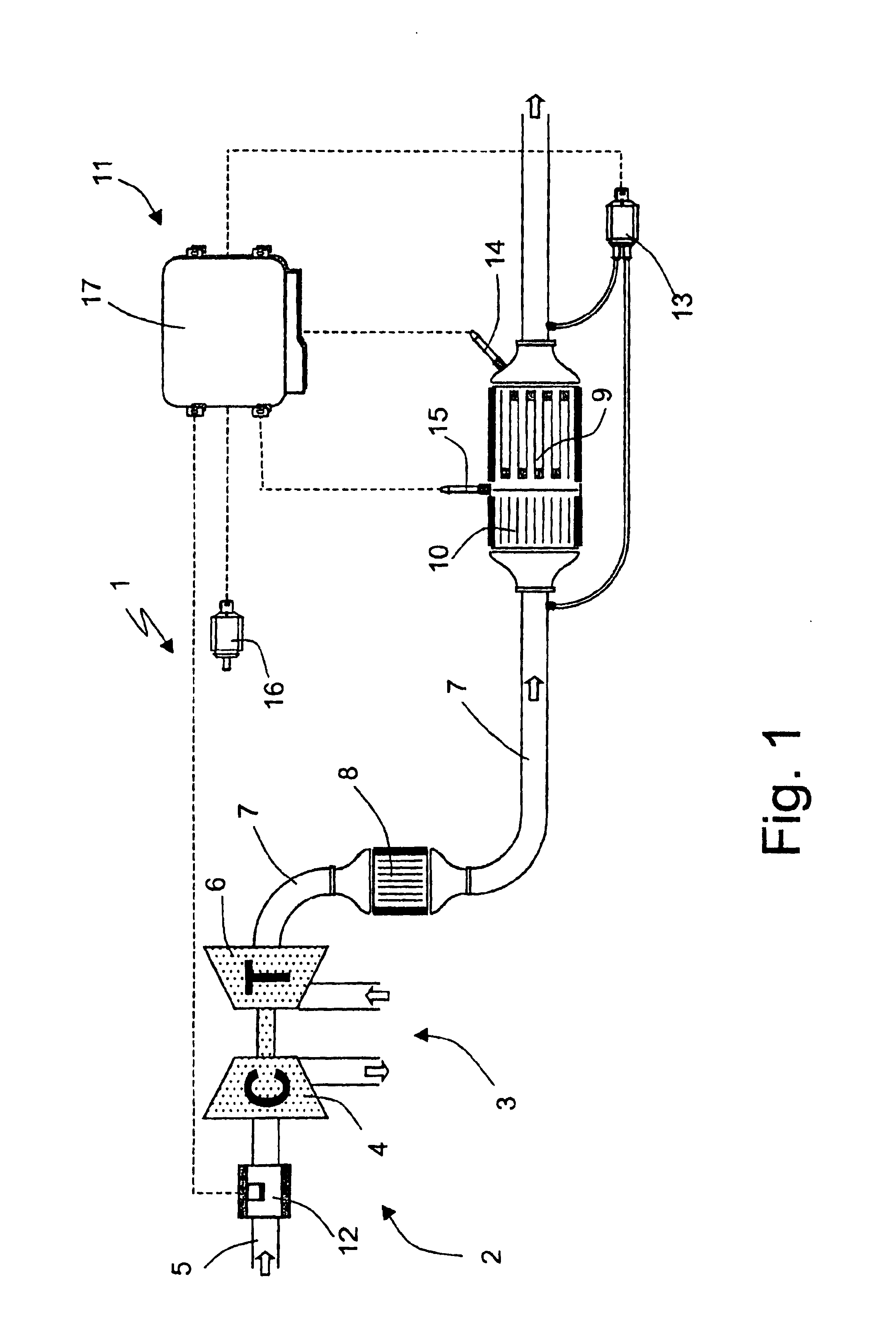Method of determining the amount of particulate accumulated in a particulate filter
a technology of particulate filter and amount, which is applied in the direction of electrical control, exhaust treatment electric control, instruments, etc., can solve the problems of direct injection diesel engines introduced on the market, serious particulate emissions in 90s, and overheating of the ceramic matrix of the filter
- Summary
- Abstract
- Description
- Claims
- Application Information
AI Technical Summary
Benefits of technology
Problems solved by technology
Method used
Image
Examples
Embodiment Construction
[0046]Number 1 in FIG. 1 indicates as a whole an exhaust system of an engine 2, in particular a diesel engine. In the non-limiting example shown, diesel engine 2 in FIG. 1 is a turbocharged type, and comprises a turbocharger 3 defined by a compressor 4 located along an air intake conduit 5, and by a turbine 6 connected to compressor 4 and located along an exhaust conduit 7.
[0047]Exhaust system 1 comprises an oxidizing catalytic converter (pre-cat) 8 located along exhaust conduit 7, close to turbocharger 3; a particulate filter 9 located along exhaust conduit 7, downstream from pre-cat 8; and a further oxidizing catalytic converter (Front-cat) 10 located along exhaust conduit 7, upstream from particulate filter 9.
[0048]Alternatively, the functions of Front-cat 10 and particulate filter 9 may be performed by a single component known as a catalyzed particulate filter (not shown).
[0049]Particulate filter 9, whether it be separate from or integrated with Front-cat 10, may be provided wit...
PUM
| Property | Measurement | Unit |
|---|---|---|
| temperatures | aaaaa | aaaaa |
| physical-chemical properties | aaaaa | aaaaa |
| temperature | aaaaa | aaaaa |
Abstract
Description
Claims
Application Information
 Login to View More
Login to View More - R&D
- Intellectual Property
- Life Sciences
- Materials
- Tech Scout
- Unparalleled Data Quality
- Higher Quality Content
- 60% Fewer Hallucinations
Browse by: Latest US Patents, China's latest patents, Technical Efficacy Thesaurus, Application Domain, Technology Topic, Popular Technical Reports.
© 2025 PatSnap. All rights reserved.Legal|Privacy policy|Modern Slavery Act Transparency Statement|Sitemap|About US| Contact US: help@patsnap.com



